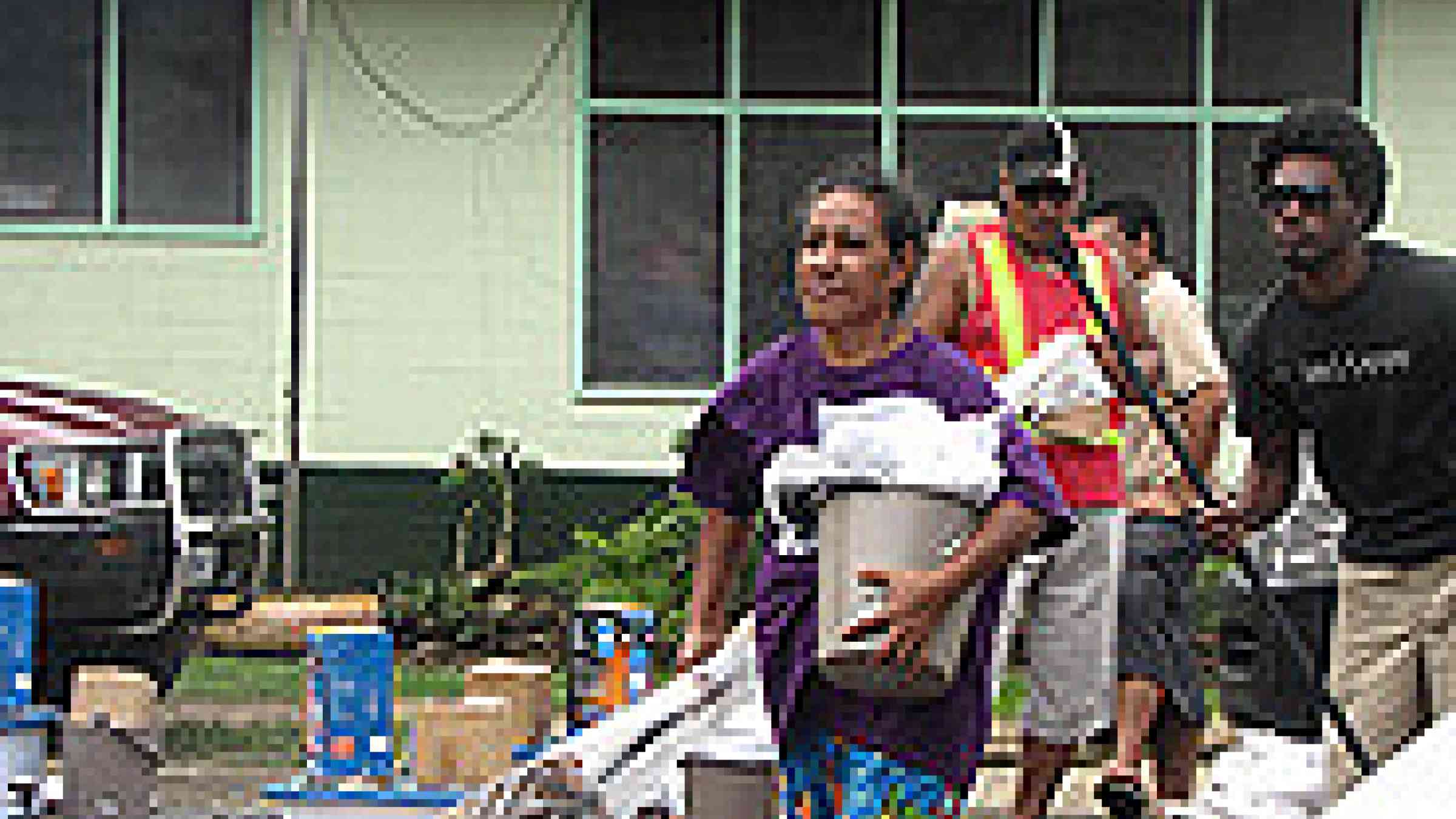
By Karina Coates, Australian Red Cross, in Samoa
Falefata Elaulau looks across the foundations of his new home to the distant sea below. A year ago, his family of 13 lived in three houses next to the ocean, but the tsunami that devastated parts of Samoa's coastline on 29 September 2009 not only claimed 143 lives and ravaged the landscape, it changed the way of life for hundreds of families.
One year on, entire communities, including Falefata's village of Saleapaga where 32 people died, have relocated inland and uphill to avoid future tsunamis. Other natural disasters are also top of mind. "I aim to make this house strong to protect my family from disasters like cyclones," the 66-year-old grandfather of four says.
With his family now living in two traditional Samoan homes, built without walls to combat the hot climate, Falefata feels they need more protection from the storms that are common from November to April each year. "It will be a European-style house," he says.
Heightened awareness
Samoa Red Cross Secretary General Tautala Mauala says this kind of heightened awareness of natural disasters is evident across the country. "While disaster planning was previously simply theoretical, it's now very meaningful to Samoan communities," she says.
"Some communities that remain near the ocean are constructing escape routes up steep cliffs to prevent being trapped by another tsunami. Others are including disaster risk reduction in community plans," she says.
Successful relocation
Falefata says that despite the efforts required over the past year, the consensus at a recent village meeting was that the move to Saleapaga's new location has been a success.
His daughter Ato Tausaga, 33, agrees. "My family didn't want to live near the sea again. We wanted to build a new life up here, where we don't have to worry about another tsunami," she says.
"The most difficult thing about moving was getting enough clean water – it was harder for us at the beginning, but now it's much better with help from the government and Red Cross," Ato says.
Clean water to reduce vulnerability
Falefata's family is one of 349 receiving a 5,000-litre Red Cross rainwater harvesting tank to collect safe drinking water. The family can also access clean water from another tank in front of their land, part of a new interim gravity-fed water system that Red Cross supported with 17 kilometres of pipe.
"The pipes help us a lot," Falefata says. "Now we get water easily every day, without having to wait for it to rain."
IFRC Tsunami Recovery Coordinator Erin Cornish says that communities with more than one safe water source are less vulnerable should a disaster strike. "Water has been a major focus of the Red Cross response, including immediately distributing drinking water to prevent diseases and delivering more than 1.8 million litres of water to villages over four months," she says.
"Our water program is part of a broader strategy to build communities' capacity to cope with disasters," Ms Cornish says. "Other programs, such as our support for livelihoods, work towards the same goal."
Strengthening livelihoods
Soo Poni has always lived by the ocean in Lalomanu, another of the hardest-hit villages. Hers is one of 169 families in 19 villages that received a Red Cross livelihoods cash grant, which she has used to rebuild her grocery business that was destroyed by the tsunami.
The 46-year-old recalls how a wave struck the shop and then smashed her through its back door before pushing her house on top of her. A second wave freed her, but took everything she owned.
The loss of so many things – including money kept in her shop – meant Soo and her husband had to work at a tourist resort to make ends meet. "It's very hard to find money for bus fares and school fees for our two children," she says. "With our own business again, I can work towards our future plans."
Remembering the past, looking to the future
In Saleapaga, Falefata's building work includes helping to construct a monument honouring the people from his village who died in the tsunami, which will be unveiled on the anniversary at a special ceremony. His other focus is protecting his family. "The next step is finishing the house so that the children can move in," he says.
In Lalomanu, Soo's plans are also straightforward. "I want to extend my business and buy more stock. I hope to make enough money to build beach bungalows so tourists can swim and have barbecues here," Soo says. "I wouldn't be able to do this without Red Cross' help."